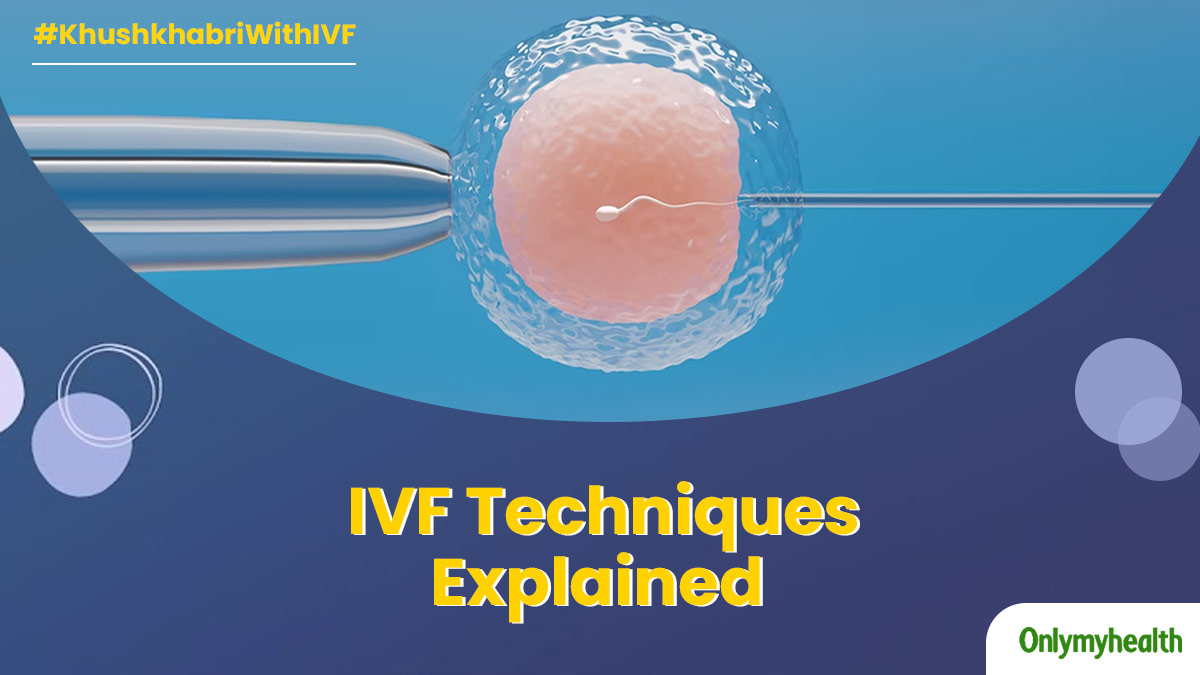
#KhushkhabriWithIVF: Over the past few years, IVF has gained significant popularity and has become an affordable and accessible alternative in many countries. The world's first IVF baby, Louise Brown, was born in 1978. Since then, more than five million IVF babies have been born globally. OnlyMyHealth has come up with a series ‘KhushKhabri With IVF’ to bring forth all the necessary information that may help couples consider IVF to embrace parenthood. With this aim, we reached out to Dr. Parul Gupta Khanna, Infertility Specialist in Rajouri Garden, Nova IVF Center to understand different techniques that are used by IVF specialists and their benefits to help couples decide the best for them.
Table of Content:-
IVF has become a common procedure to treat male and female infertility, with a success rate of 60% for women below 35 years of age. As reproductive science advances, each new discovery gives a new light of hope for those who may be suffering from fertility difficulties that were previously thought to be incurable.
In-vitro fertilization (IVF) is an advanced technique that aims to improve fertility. During IVF, mature eggs are extracted from the ovaries and fertilized with the sperm in a laboratory. The (embryo)(s) formed are then placed back in the uterus. Over the years, new procedures have been added to this process, overcoming obstacles and increasing the likelihood of conception for couples with unfavorable circumstances.
Also Read: IVF Explained: What is IVF? Doctor Sheds Light On Need, Risks and Success
Advance Techniques in IVF
"The past years have been a witness to a number of advanced techniques and services offered in conjunction with IVF such as Cryopreservation, Laser assisted hatching, Microscopic Testicular Sperm Extraction, Preimplantation Genetic Testing (PGT), etc that may benefit different individuals and help them tackle infertility," shares Dr. Parul Gupta Khanna.

Some of the Current Developments in IVF procedures are:
Intracytoplasmic Sperm Injection
It is a subset of IVF and the most advanced form of IVF. Intracytoplasmic Sperm Injection (ICSI) has grown increasingly automated as a result of breakthroughs in robotics and nanotechnology, allowing for real-time measurement of oocyte penetration by picking the optimal sperm or for a given condition. The sperm is then implanted into the egg with the help of nanotechnology. This method is frequently used to treat male infertility, particularly for men with less than 5 million sperm counts.
Also Read: Time Gap In IVF Cycles: Wait Period Before You Try Again After An Unsuccessful Attempt
Oocyte cryopreservation
Dr. Parul shares, "Oocyte cryopreservation by vitrification method is one of the most popular treatments for women to preserve their fertility by freezing the unfertilized eggs extracted from an individual's ovaries and storing them as long as ten years."
Advancements in medical technology have made it possible to freeze eggs and sperms, or viable embryo (s) for later use. This means that couples who are delayed having children due to professional reasons or medical concerns such as cancer, where treatments such as chemotherapy and radiotherapy can be potent to one or all of the eggs or sperms, could still have the alternative to carry biological children of their own. In addition, couples attempting to conceive a second child through IVF also use frozen embryos. These can be frozen for up to ten years.

Stem Cell Treatment
In infertility, this technique is useful for patients with thin endometrium or for ovarian rejuvenation, where there is poor ovarian reserve. Stem cells for cell therapy are often obtained from bone marrow or fat tissues. Due to their unique ability to self-regrow and differentiate into any form of cell and attach to the injured part of the body that requires healing and restoration, these cells are known as totipotent stem cells.
Laser-Assisted Hatching
Laser- Assisted hatching one of the latest IVF treatments and is useful in a number of conditions. In certain cases, embryos are coated with a jelly-like layer that prevents healthy embryos from infusing in a woman's uterine wall. It involves piercing a cut in the strong external shell of the embryo to “hatch” and ease the implantation of the embryo. In the majority of IVF treatments, the embryo successfully implants in the womb.
Also Read: 10 Things To Remember Before Undergoing IVF Treatment
Oocyte Activation
Artificial oocyte activation (AOA) is an effective method for preventing fertilization failure in IVF cycles, by the insertion of calcium ionophore chemical, which is used to assist activate the egg and promote fertilization.
Preimplantation Genetic Testing: In cases of recurrent losses or advanced maternal age, a PGT of the embryo is performed prior to implantation to guarantee that the child to be delivered does not inherit any genetic problems.For those with a family history of genetic abnormalities, such as Down syndrome, the couple is genetically tested to tackle the genetic issues and make way for the implantation of healthy embryo.
Microscopic Testicular Sperm Extraction
Microscopic Testicular Sperm Extraction is used to treat extremely severe male infertility where there is azoospermia, Azoospermia is a condition where there is no sperm in the semen. This could be related to several causes, including hormone imbalances and low/no sperm production.
In such circumstances, this treatment is conducted in conjunction with IVF, wherein doctors use a specially designed injection to pick out the sperm directly from slots in the testes where they are stored. During the extraction process, sophisticated microscopes are used to detect 1-2 healthy sperms and extract only those that enhance the chances of quick fertilization with the female partner's eggs.
Also watch this video
How we keep this article up to date:
We work with experts and keep a close eye on the latest in health and wellness. Whenever there is a new research or helpful information, we update our articles with accurate and useful advice.
Current Version